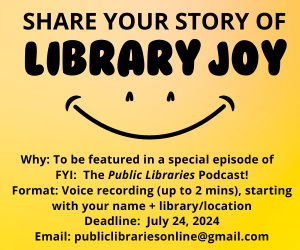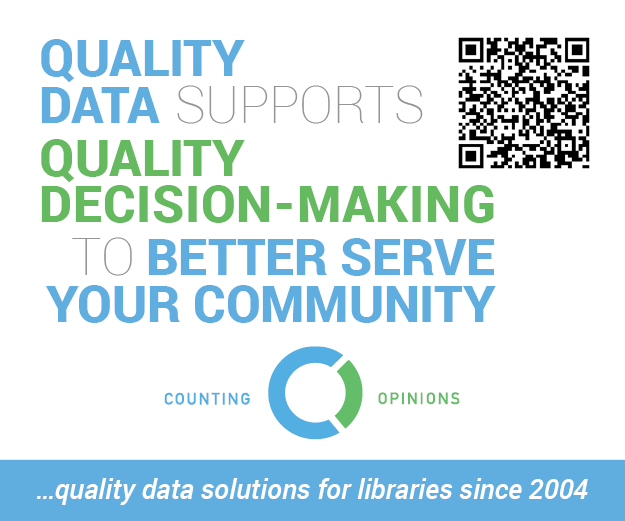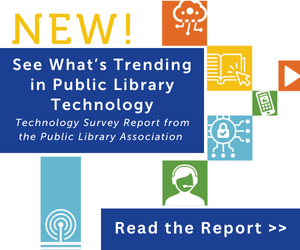Library Service to the Homeless
Public libraries are a primary source of information and refuge for the poor and disenfranchised. However, many public libraries have enacted policies that limit homeless patrons’ access to library resources. These policies are often put in place in response to complaints from other patrons about the presence of those exhibiting signs of poverty. District of Columbia Public Library put an “offensive body odor” policy into place that was later declared unconstitutional by the courts because of its uneven enforcement.1 Similarly, Tacoma (Wash.) Public Library banned the presence of bulky bags and bedrolls in the library.2
Other policies attempt to control the conduct of patrons, but their uneven application has led many to question whether these codes are little more than “poverty profiling.” Multnomah County (Ore.) Public Library, for instance, has enacted policies detailing the proper use of restrooms, placing a limit on “bathing, shaving, washing hair, and changing clothes.”3 Some libraries have even incorporated anti-homeless design into their buildings. Baltimore’s Enoch Pratt Free Library installed a spiked iron railing in their window sills to prevent homeless individuals from sleeping and loitering.4
These policies bring up an important issue in the management of libraries and information centers. Is it ethical, or even legal, to limit the access of homeless patrons to protect the rights of other patrons? How do we educate our patrons about the unique circumstances of the homeless population? And, most importantly, how do we remove the barriers of access homeless people face and create programs that engage them in a meaningful way? First, I will examine the legal and ethical ramifications of conduct codes and other policies targeted at the homeless. Then, I will outline some of the barriers that prevent homeless people from taking full advantage of library services. Finally, I will propose some outreach efforts that libraries can enact to fulfill the special information and service needs of the homeless in their community.
Legal Implications
Two legal cases provide important precedent in discussing the legality and constitutionality of conduct codes targeted at homeless patrons. The first, Kreimer v. Bureau of Police for Town of Morristown (1992), was brought to the District Court of New Jersey by Richard Kreimer, a homeless man, who sued the public library for violating his First Amendment rights after he was evicted based on his appearance, hygiene, and repeated behavior problems.5 The first issue to be decided by the court was whether the library is a public forum. If the library is a public forum, it cannot, as a governmental entity, condition access to freedom of speech––a constitutional right that applies also to the right to receive information.6 The second issue is whether the language of the conduct code was vague, and hence a violation of the Fourteenth Amendment, which prohibits the government from enforcing conduct standards in an arbitrary or discriminatory way.7 Initially, the court ruled that the library is a public forum that cannot discriminate in providing access to information based on hygiene and “annoying” behavior, standards that are subjective and at risk of being applied in a prejudicial manner.8 However, the Third Circuit Court of Appeals later overturned their decision based on a definition of libraries as a “limited public forum.”9 The classification of the library as a public forum means that the library is open to the public for certain, limited purposes, and the court ruled that libraries do have the right to bar conduct that inhibits other patrons’ ability to utilize the library for these intended purposes.10
In 2001 the constitutionality of library policies based on hygiene and appearance was again put under question. In the case of Armstrong v. District of Columbia Public Library (2001), a homeless man was refused admittance to the library based on his “objectionable appearance.”11 In this case, the court ruled that the library’s policy against “objectionable appearance” was too vague, and therefore subject to discriminatory application and a violation of the due process guaranteed by the Fifth Amendment.12 Furthermore, the library violated Armstrong’s First Amendment rights by limiting his ability to receive information. This case was different from Kreimer v. Morristown because Armstrong was not allowed admittance, and therefore not able to use the library for its intended purposes as a limited public forum, as established in previous court precedent.
The two previously mentioned cases represent two legal evaluations of library policies limiting the access of certain patrons to the library. They demonstrate that it is not illegal to regulate behavior and appearance if it interferes with other people’s utilization of the library. However, policies must be applied in an equal manner and based on clear guidelines, so as to target the behavior and not the patron. Mary Minow, a lawyer and librarian, offers a useful set of guidelines for libraries to follow to ensure their policies are not discriminatory and within legal bounds.13 Her guidelines, “FEND,” give a set of best practices when creating conduct codes:
First Amendment: Libraries must protect the right of free speech.
Equal Enforcement: Policies must be applied consistently.
Notice: All policies should be clearly posted or distributed.
Due Process: A well-defined appeals process must be available to patrons who challenge library policies.14
The most important thing to remember when designing lists of unacceptable behavior is that policies must be written in such a way to ensure equal enforcement. This means that if sleeping is prohibited, it cannot be enforced only against the homeless; it must be enforced against all patrons, including children, teenagers, the elderly, prominent community members, and so on. Furthermore, patrons must be fully informed of inappropriate conduct and given the opportunity to argue their case. Only behavior that infringes on other patrons’ rights should be considered.
Another important consideration when enforcing behavioral rules is that patrons acting erratically may behave in such a way because of a disability. Disruptive behavior by patrons who are expressing symptoms of disabilities such as Tourette syndrome, autism spectrum disorder, schizophrenia, or others are protected by the Americans with Disabilities Act.15 In these cases, punitive action is inappropriate. Library staff may not be aware of the symptoms or nature of these disabilities and it is imperative that they are educated in these matters. Furthermore, appropriate courses of action for when patron behavior becomes disruptive or dangerous should be planned for in advance. Library workers should be aware of crisis teams in their community because these health professionals are specifically trained to deal with situations such as these.16 Library staff should be trained in assessing whether situations call for health professionals rather than police.
Ethical Obligations
Now that we have examined some of the legal ramifications of policies targeting homeless patrons, it is time to turn to the ethical obligations librarians have to provide equal access to information and how librarians can balance the rights of different patrons. The American Library Association (ALA) is the primary agency that provides libraries with a set of standards and a code of ethics. Section 61 of ALA’s policy manual, entitled, “Library Services to the Poor,” promotes “equal access to information,” and libraries’ “role in enabling poor people to participate fully in a democratic society.”17 This means that libraries should not promote policies that limit the access of information to any category of people. Further, it means that libraries have a special obligation to advocate for the information rights of economically disenfranchised populations like the homeless. Policies that isolate and discourage the homeless from seeking information are essentially violating the ethics of the primary governing body of librarianship, the ALA. This sentiment is echoed by the Hunger, Homelessness & Poverty Task Force of ALA’s Social Responsibility Round Table (2005), which says that:
Odor policies of the sort enacted by San Luis Obispo County, California, and the civility campaign, launched by Salt Lake City (Utah) Library to teach the homeless, children, and others how to behave are at best misguided and, at worst, contribute to the criminalization of poor people.18
Therefore, when enacting conduct codes, libraries must be sure that they are, in fact, regulating behavior, and not participating in poverty profiling.
Balancing the needs of different patrons requires that libraries do their best to promote an atmosphere that is welcoming to all patrons and conducive to everyone’s enjoyment of the library. However, the presence of homeless people and the unpleasant effects of poverty may provoke patrons to demand the sort of discriminatory policies that have just been established as unethical and, in some cases, illegal. When responding to these dilemmas, it is important to remember that the poor and homeless experience poverty, not only in the economic sense, but also what Lan Shen calls a “poverty of rights.”19 Displeasing odors and atypical behavior do not compare with the seriousness and enormity of the issue of poverty. Furthermore, Don Mitchell, a geographer and homeless rights advocate points out that, for those who do not have private spaces of their own like the homeless, laws and policies that limit what can be done in public space are essentially limiting what they can do at all.20 So libraries that ban the improper use of bathrooms and sleeping may be eliminating yet another space in which the homeless are able to perform basic human activities. Although, it is not the job of libraries to alleviate the issue of homelessness, many public libraries provide a refuge or sanctuary to those stricken by poverty.21
Outreach Programs that Empower Homeless Patrons
One of the benefits of the library serving as a refuge for the homeless is that it presents librarians with the opportunity to fulfill their role in providing information and services that enable the poor and homeless to participate fully in democratic society and become competent information users and active citizens. Librarians can provide quality information and service to the homeless by utilizing a number of strategies.
The first step to providing effective service to homeless patrons is to get to know the homeless in your community. The best way to do this is to engage homeless patrons through surveys, interviews, or focus groups. However, because of the difficulty of reaching patrons who are already underserved by the library, it is imperative to collaborate with nonprofit groups and government agencies that work with the homeless in your community.22 The homeless are not a homogenous group, even though they are often treated that way. The homeless population is a diverse group including people of difference races, ethnicities, ages, and genders. Therefore, information should be gathered about the demographics and sub-groups of homeless and their specific information needs. Libraries should also gather information that will aid in the planning of programming and other services; for example, information about shelter hours in the area should inform decisions on when to plan programming.23
In addition to meeting the specific information needs of the homeless, ALA urges libraries to “promote the publication, production, purchase, and ready accessibility of print and nonprint materials that honestly address the issues of poverty and homelessness . . . [and] . . . that deal with poor people in a respectful way.”24 The acquisition and promotion of these materials will help to educate patrons and staff, ease tension, and breed compassion within the community. In addition to collection development, information relevant to the needs of homeless people can be disseminated via the library’s website or in the form of a pamphlet that can be given to patrons to keep. For example, Baltimore County (Md.) Library partnered with the Baltimore Coalition for the Homeless to produce “street cards” with information pertaining to food, health, shelter, legal aid, welfare, employment, and so on.25
There are some aspects of traditional library service that present unique difficulties to the homeless population. In order to properly serve the homeless, libraries should evaluate their service for potential barriers they may present to homeless patrons. Some specific barriers for homeless patrons include those relating to costs, transportation, lack of permanent residence, and staff attitude. In order to eliminate barriers relating to cost, the ALA recommends the removal of fees for service, particularly overdue charges.26 However, in tight budget times, public libraries may be reluctant to eliminate a reliable source of income. Another option is to create fine exemptions for people of low incomes. However, libraries should be especially careful that exemptions such as these are based on fair metrics and are not perceived as inequitable by the community.
Another common barrier that homeless patrons experience is lack of transportation. Transportation barriers can be alleviated in a few different ways. Bookmobiles can be used to provide convenient service, or libraries may choose to provide supplemental services at shelters in their area. Multnomah County (Ore.) Library has instituted a shelter delivery program that distributes paperbacks on a monthly basis to shelters and transition homes.27 Providing services onsite at shelters is another option. Live Oak Public Libraries in Georgia provides storytime at six different shelters.28 Onsite service and delivery to shelters can help alleviate another significant barrier to service for homeless patrons, lack of permanent housing. Homeless patrons’ access to library collections is limited by their often nomadic or unstable lifestyle since many libraries require proof of residence to check out materials. Libraries, such as Worcester (Mass.) Public Library, have begun to allow homeless patrons to use shelter addresses to obtain library cards, an option to consider when designing library policies that are barrier-free.29
Some researchers, such as Julie Hersberger, professor of information science at the University of North Carolina at Greensboro, maintain that the biggest barrier for homeless patrons lies with the attitudes of library staff.30 The intimidation and unworthiness felt by some homeless patrons is a real obstacle that libraries can eliminate by providing sensitivity training, education, and by adopting ALA’s Policy on Library Services to the Poor. The combination of sensitivity training and education can help reduce staff fear or confusion in dealing with homeless patrons and enlighten them to their unique service needs. Aware of the intimidation felt by homeless patrons, San José (Calif.) Public Library, in collaboration with lawyers, social workers, and other community agencies, created special reference services, such as focused one-day workshops, targeted to the needs of homeless patrons.31
ALA’s Policy to the Poor should be incorporated into a library’s goals, mission, or strategic plan in order to communicate the importance of these measures and create an environment that values inclusiveness. A 2009 survey of ALA members on Policy 61 (Library Services to the Poor) discovered that members were not collaborating with each other and other agencies to carry out the goals of this policy.32 This suggests that the ALA may need to do more to promote the significance of this measure and provide more resources and support to libraries undertaking programs and other outreach services to their poor and homeless in their communities. Lisa Gieskes, ALA Hunger, Homelessness & Poverty Task Force coordinator, also suggests that the category, “class” be added to amendment five of the Library Bill of Rights, which protects a patron’s right to use the library.33
Conclusion
Enacting policies that amount to little more than “poverty profiling” and labeling the homeless individuals as problem patrons are ineffective and negative measures that do little to create an inclusive and welcoming public library environment. Furthermore, libraries have an obligation as public institutions to promote equal access to information and advocate for the poor and homeless by providing them with the information needed to become full participants in our democratic society. Providing outreach and eliminating barriers to service for the disenfranchised are positive and proactive ways that libraries can create a welcoming public forum, ease tensions between patrons, and educate others about the difficulties faced by those in poverty.
References
- Sandy Berman, “Classism in the Stacks: Libraries and Poverty,” Journal of Information Ethics 16, no. 1 (Spring 2007): 103–10.
- Lan Shen, “The Dilemma of Urban Library Service for the Homeless,” Current Studies in Librarianship 26, no. 1/2 (Spring/Fall 2002): 77–83.
- Ibid., 80.
- Ibid.
- Sheila Ayers, “The Poor and Homeless: An Opportunity for Libraries to Serve,” The Southeastern Librarian 54, no. 1 (Spring 2006): 66–74; James Kelly,
“Barefoot in Columbus: The Legacy of Kreimer and the Legality of Public Library Access Policies Concerning Appearance and Hygiene,” Public Libraries 45, no. 3 (May/June 2006): 42–49; Julie Murphy, “When the Rights of the Many Outweigh the Rights of the Few: The Legitimate Versus the Homeless Patron in the Public Library,” Current Studies in Librarianship 23 no. 1/2 (1999): 50–60. - Kelly, “Barefoot in Columbus”; Kreimer v. Bureau of the Police for the Town of Morristown, 765 F.Supp 181 (D.N.J. 1991), accessed Mar. 12, 2011.
- Kreimer, 181 D.N.J.
- Ayers, “Poor and Homeless”; Kelly, “Barefoot in Columbus”; Murphy, “Rights of the Many.”
- Ayers, “Poor and Homeless”; Murphy, “Rights of the Many.”
- Ibid.
- Armstrong v. District of Columbia Public Library, 154 F.Supp.2d 67 (2001), accessed Mar. 12, 2011; Kelly, “Barefoot in Columbus.”
- Ibid.
- Jennifer McClure, “Librarians and the Law: An ALLA Pre-conference with Mary Minow,” Alabama Librarian 56, no. 2 (Summer 2006): 8–9.
- Ibid., 8.
- Murphy, “Rights of the Many.”
- John Gehner and Kali Freeman, “Just a Little Understanding: A Social-Service Provider’s Perspective on Homeless Library Users,” (2005), Hunger, Homelessness, & Poverty Task Force, accessed Mar. 12, 2011.
- American Library Association, “Policy Manual 61: Services to the Poor,” (2010), accessed Mar. 12, 2011, para. 1.
- American Library Association, “Are Public Libraries Criminalizing Poor People? A Report from the ALA’s Hunger, Homelessness, and Poverty Task Force,” Public Libraries 44, no. 3 (May/June 2005): 175, para. 2.
- Shen, “The Dilemma of Urban Library Service,” 80.
- Don Mitchell, “The Annihilation of Space by Law: The Roots and Implications of Anti-Homeless Laws in the United States,” Antipode 29, no. 3 (July 1997): 303–35.
- Murphy, “Rights of the Many”; Julie Hersberger, “The Homeless and Information Needs and Services,” Reference & User Services Quarterly 44, no. 3 (2005): 199–202.
- Lydia N. Collins, Francis Howard, and Angie Miraflor, “Addressing the Needs of the Homeless: A San José Library Partnership Approach,” The Reference
Librarian 50, no. 1 (2009): 109–16. - Berman, “Classism in the Stacks.”
- ALA, “Policy Manual 61,” policy objective 2.
- Shen, “The Dilemma of Urban Library Service.”
- ALA, “Policy Manual 61.”
- Shen, “The Dilemma of Urban Library Service.”
- Ibid.
- Ayers, “The Poor and Homeless.”
- Hersberger, “The Homeless and Information Needs and Services.”
- Collins et al., “Addressing the Needs of the Homeless.”
- Lisa Gieskes, “ALA Task Force Member Survey on Policy 61. Library Services for the Poor,” Progressive Librarian 32 (2009): 82–87.
- Ibid.












